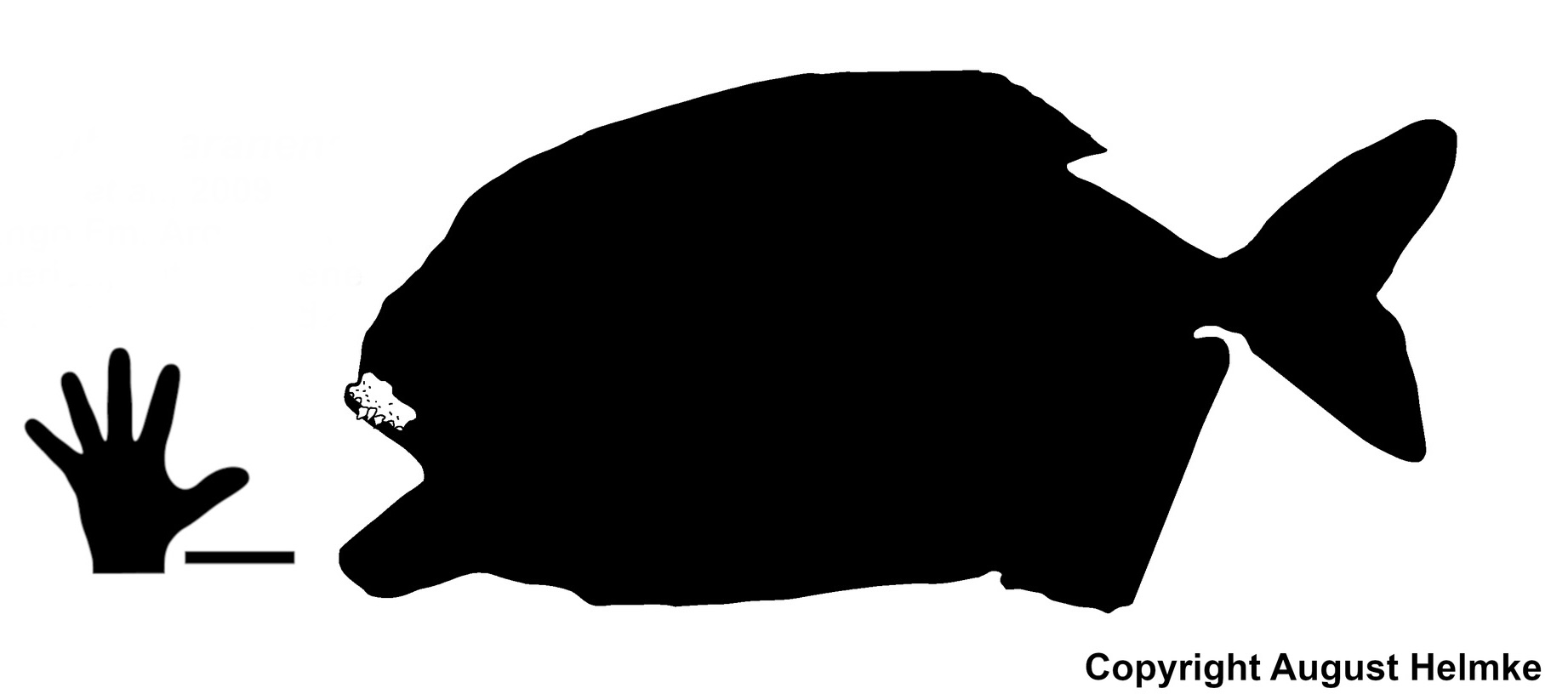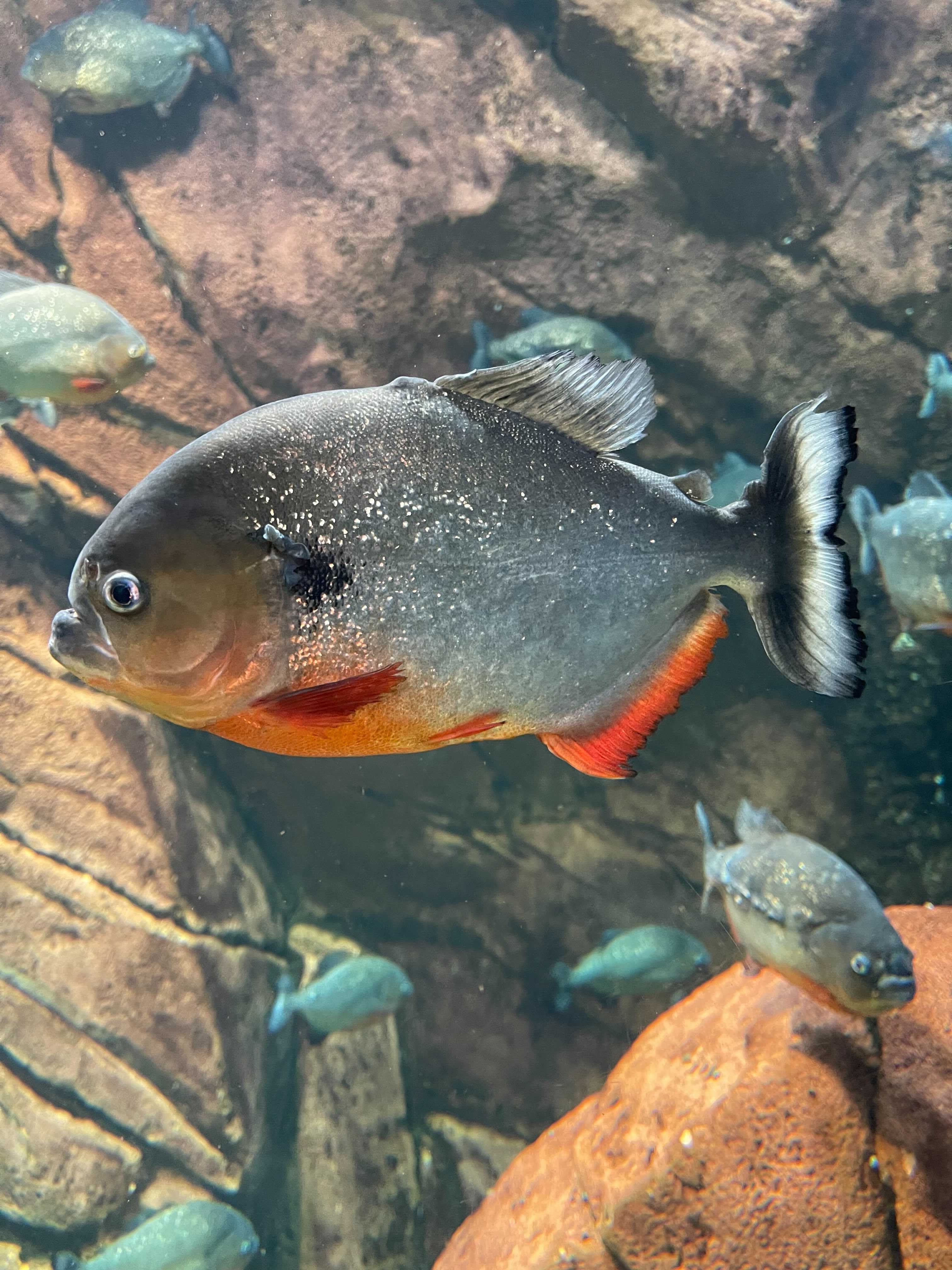|
Megapiranha
''Megapiranha'' is an extinct serrasalmid characin fish from the Late Miocene (8–10 million years ago) Ituzaingó Formation of Argentina, described in 2009. The type species is ''M. paranensis''.''Megapiranha'' at Fossilworks.org It is thought to have been about in length and in weight. The consists only of e and a zigzag tooth row; the rest of its body is unknown. [...More Info...] [...Related Items...] OR: [Wikipedia] [Google] [Baidu] |
Ituzaingó Formation
The Ituzaingó Formation ( es, Formación Ituzaingó), in older literature also described as Entre Ríos or Entrerriana Formation, is an extensive geological formation of Late Miocene (Tortonian, or Huayquerian in the SALMA classification) age in the Paraná Basin of the Corrientes, Santa Fe and Entre Ríos Provinces in Mesopotamia, northeastern Argentina.Ituzaingó Formation at .org The formation comprises s, cross-bedded |
Piranha
A piranha or piraña (, , or ; or , ) is one of a number of freshwater fish in the family Serrasalmidae, or the subfamily Serrasalminae within the tetra family, Characidae in order Characiformes. These fish inhabit South American rivers, floodplains, lakes and reservoirs. Although often described as extremely predatory and mainly feeding on fish, their dietary habits vary extensively, and they will also take plant material, leading to their classification as omnivorous. Etymology The name originates from the indigenous Tupi people and their respective Tupi language. It is formed from two words, meaning fish and meaning tooth; the same word is used by Indians to describe a pair of scissors. Another possible derivation is from , probably literally "biting-fish". In the mid 18th century the Portuguese merged the word into . Finally, the word may also come from the combination of meaning fish and meaning cut (which also meant "bad" or "devil" in Tupi-Guarani). Taxonomy an ... [...More Info...] [...Related Items...] OR: [Wikipedia] [Google] [Baidu] |
Huayquerian
The Huayquerian ( es, Huayqueriense) age is a period of geologic time (9.0–6.8 Ma) within the Late Miocene epoch of the Neogene, used more specifically within the SALMA classification. It follows the Mayoan and precedes the Montehermosan age. Etymology The age is named after the Huayquerías Formation in the western Cuyo Basin of northwestern Argentina that was later dated to the Montehermosan. The most complete Huayquerian fauna is found in the Cerro Azul Formation The Cerro Azul Formation ( es, Formación Cerro Azul), in the Buenos Aires Province also described as Epecuén Formation, is a geological formation of Late Miocene (Tortonian, or Huayquerian in the SALMA classification) age in the Colorado Basin ..., in Buenos Aires Province also referred to as Epecuén Formation. Formations Fossil content Correlations Notes and references Notes References Bibliography ;Huayquerías Formation * * ;Andalhuala Formation * ;Camacho Formation * * ... [...More Info...] [...Related Items...] OR: [Wikipedia] [Google] [Baidu] |
Serrasalminae
The Serrasalmidae (serrasalmids) are a family of characiform fishes, recently elevated to family status. It includes more than 90 species. The name means "serrated salmon family", which refers to the serrated keel running along the belly of these fish. Fish classified as Serrasalmidae are also known by these common names: pacu, piranha, and silver dollar. These common names generally designate differing dental characteristics and feeding habits. Description Serrasalmids are medium- to large-sized characiform fishes that reach about long, generally characterized by a deep, laterally compressed body with a series of midventral abdominal spines or scutes, and a long dorsal fin (over 16 rays). Most species also possess an anteriorly directed spine just before the dorsal fin extending from a supraneural bone; exceptions include members of the genera ''Colossoma'', ''Piaractus'', and ''Mylossoma''. Most serrasalmids have about 60 chromosomes, ranging from 54 to 62.''Metynnis'' has ... [...More Info...] [...Related Items...] OR: [Wikipedia] [Google] [Baidu] |
Serrasalmidae
The Serrasalmidae (serrasalmids) are a family of characiform fishes, recently elevated to family status. It includes more than 90 species. The name means "serrated salmon family", which refers to the serrated keel running along the belly of these fish. Fish classified as Serrasalmidae are also known by these common names: pacu, piranha, and silver dollar. These common names generally designate differing dental characteristics and feeding habits. Description Serrasalmids are medium- to large-sized characiform fishes that reach about long, generally characterized by a deep, laterally compressed body with a series of midventral abdominal spines or scutes, and a long dorsal fin (over 16 rays). Most species also possess an anteriorly directed spine just before the dorsal fin extending from a supraneural bone; exceptions include members of the genera ''Colossoma'', ''Piaractus'', and ''Mylossoma''. Most serrasalmids have about 60 chromosomes, ranging from 54 to 62.''Metynnis'' has ... [...More Info...] [...Related Items...] OR: [Wikipedia] [Google] [Baidu] |
Transitional Form
A transitional fossil is any fossilized remains of a life form that exhibits traits common to both an ancestral group and its derived descendant group. This is especially important where the descendant group is sharply differentiated by gross anatomy and mode of living from the ancestral group. These fossils serve as a reminder that taxonomic divisions are human constructs that have been imposed in hindsight on a continuum of variation. Because of the incompleteness of the fossil record, there is usually no way to know exactly how close a transitional fossil is to the point of divergence. Therefore, it cannot be assumed that transitional fossils are direct ancestors of more recent groups, though they are frequently used as models for such ancestors. In 1859, when Charles Darwin's ''On the Origin of Species ''On the Origin of Species'' (or, more completely, ''On the Origin of Species by Means of Natural Selection, or the Preservation of Favoured Races in the Struggle for L ... [...More Info...] [...Related Items...] OR: [Wikipedia] [Google] [Baidu] |
Paraná, Entre Ríos
Paraná () is the capital city of the Argentine province Entre Ríos, located on the eastern shore of the Paraná River, opposite the city of Santa Fe, capital of the neighbouring Santa Fe Province. The city has a population of 247,863 (). History During the 16th century, inhabitants of the city of Santa Fe settled at the other shore of the Paraná river. The first settlers called it “''Baxada del Paraná''”. Between 1854 and 1861 it was the capital city of the Argentine Confederation. Economy Paraná is not only the head of the provincial government, but also an important river port for the transshipment of cereals, cattle, fish, and lumber from the surrounding region. The principal industries installed are the manufacture of cement, furniture, and ceramics. Cityscape The centre of the city gathers colonial churches, European styles such as that of the ''3 de Febrero'' Theatre or the Government House, the mixed styles of the city's Cathedral, and modern towers like t ... [...More Info...] [...Related Items...] OR: [Wikipedia] [Google] [Baidu] |
Villa Urquiza
Villa Urquiza is a barrio or neighborhood of Buenos Aires, Argentina. It is located between the barrios of Villa Pueyrredón, Belgrano, Villa Ortúzar, Coghlan, Saavedra and Agronomía. Its limits are the streets and avenues Constituyentes, Crisólogo Larralde, Galván, Núñez, Tronador, Roosevelt, Rómulo S. Naón and La Pampa. It is a residential neighborhood with both old houses and apartment buildings, quiet streets and a few crowded, high-traffic avenues. It has several parks that make it very pleasant. During the summer, it is not uncommon to see neighbors comfortably sitting on chairs on the sidewalk, chatting with each other. It is also home of several institutions of importance to the Buenos Aires culture, such as the tango and milonga ballrooms Sunderland and Club Sin Rumbo, Argentine rock pioneer Litto Nebbia's Melopea Records, and the winner of three in a row futsal metropolitan tournaments, Club Pinocho. History The founder of Villa Urquiza was Francisco Se ... [...More Info...] [...Related Items...] OR: [Wikipedia] [Google] [Baidu] |
Museo De La Plata
The La Plata Museum ( es, Museo de la Plata) is a natural history museum in La Plata, Argentina. It is part of the (Natural Sciences School) of the UNLP (National University of La Plata). The building, long, today houses 3 million fossils and relics (including 44,000 botanical items), an amphitheatre, opened in 1992, and a 58,000-volume library, serving over 400 university researchers. Around 400,000 visitors (8% of whom are from outside Argentina) pass through its doors yearly, including a thousand visiting researchers. History Childhood excursions with his father and older brother led the 14-year-old Francisco Moreno to mount a display of his growing collection of anthropological, fossil and bone findings at his family's Buenos Aires home in 1866, unwittingly laying the foundations for the future La Plata Museum. Moreno spent the time between 1873 and 1877 exploring his country's then-remote and largely unmapped Patagonia, becoming the first non-indigenous Argentine to re ... [...More Info...] [...Related Items...] OR: [Wikipedia] [Google] [Baidu] |
Late Miocene
The Late Miocene (also known as Upper Miocene) is a sub-epoch of the Miocene epoch (geology), Epoch made up of two faunal stage, stages. The Tortonian and Messinian stages comprise the Late Miocene sub-epoch, which lasted from 11.63 Ma (million years ago) to 5.333 Ma. The evolution of life The gibbons (family Hylobatidae) and orangutans (genus ''Pongo'') are the first groups to split from the line leading to the hominins, including humans, then gorillas (genus ''Gorilla''), and finally, chimpanzees and bonobos (genus ''Pan (genus), Pan''). The splitting date between hominin and chimpanzee lineages is placed by some between 4 to 8 million years ago, that is, during the Late Miocene. References External links GeoWhen Database - Late Miocene Miocene, .03 Miocene geochronology, 03 Messinian, * Tortonian, * {{geochronology-stub ... [...More Info...] [...Related Items...] OR: [Wikipedia] [Google] [Baidu] |
Tupi Language
Old Tupi, Ancient Tupi or Classical Tupi (also spelled as Tupí) is an extinct Tupian language which was spoken by the aboriginal Tupi people of Brazil, mostly those who inhabited coastal regions in South and Southeast Brazil. It belongs to the Tupi–Guarani language family, and has a written history spanning the 16th, 17th, and early 18th centuries. In the early colonial period, Tupi was used as a ''lingua franca'' throughout Brazil by Europeans and aboriginal Americans, and had literary usage, but it was later suppressed almost to extinction. Today, only one modern descendant is living, the Nheengatu language. The names Old Tupi or classical Tupi are used for the language in English and by modern scholars (it is referred to as in Portuguese), but native speakers called it variously "the good language", "common language", "human language", in Old Tupi, or, in Portuguese, "general language", "Amazonian general language", "Brazilian language". History Old Tupi was firs ... [...More Info...] [...Related Items...] OR: [Wikipedia] [Google] [Baidu] |





